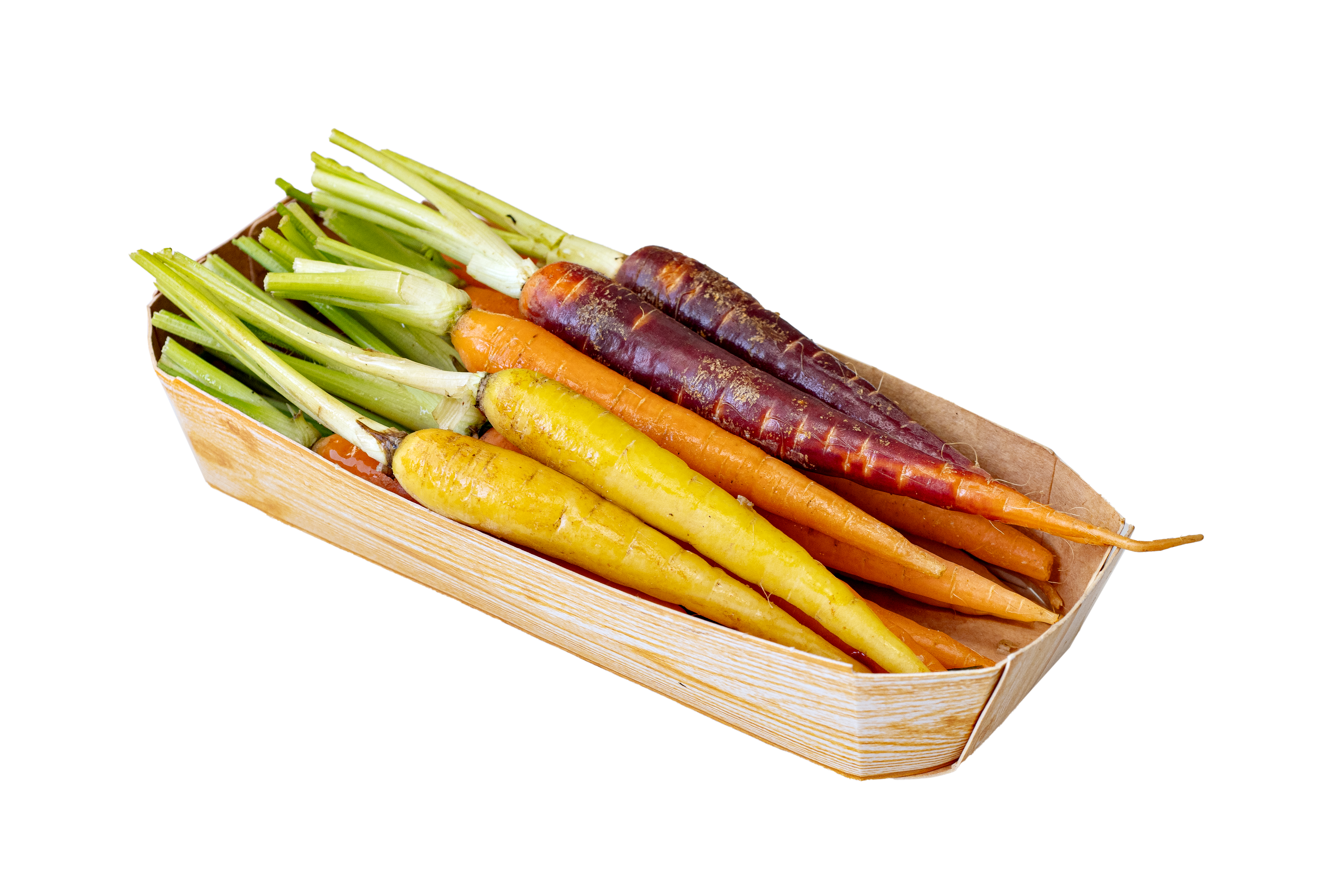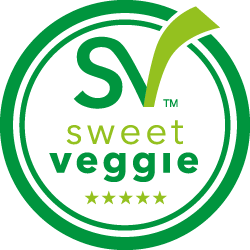Baby rainbow carrots
Baby rainbow carrots are a colorful assortment of young carrots, showcasing a spectrum of hues from deep purple to sunny yellow. These vibrant veggies not only add visual appeal to dishes but also bring a variety of flavors, ranging from sweet to slightly peppery. Their tender texture makes them perfect for both raw consumption and light cooking. A feast for the eyes, they elevate the aesthetic of any culinary creation.
Characteristics of baby rainbow carrots
- Size: Baby rainbow carrots are typically shorter and slimmer than regular carrots. They might range from the size of a finger to a small pencil in thickness and length.
- Color: As their name suggests, these carrots come in a spectrum of colors including orange, purple, red, yellow, and white. Each color offers a slightly different nutritional profile and antioxidant content.
- Taste and Texture: While all baby rainbow carrots tend to have a sweeter, more tender profile than their mature counterparts, each color can have subtle taste differences. For instance, purple carrots often have an earthy taste, while yellow carrots are notably mild and sweet.
- Skin: The skin of baby carrots is usually tender enough that they don’t require peeling. A good wash is typically sufficient before consumption.
- Nutritional Profile: All carrots are a great source of fiber, vitamin K, and potassium. They’re also renowned for their high beta-carotene content, which the body can convert into vitamin A. The various colors of rainbow carrots offer different phytonutrients. For instance, purple carrots contain anthocyanins, and red carrots are rich in lycopene.
- Culinary Uses: Due to their vibrant colors and sweet taste, baby rainbow carrots are popular in salads, crudité platters, and as a roasted side dish. They can be steamed, boiled, roasted, grilled, or eaten raw.
- Storage: Like other carrots, baby rainbow carrots should be stored in the refrigerator to maintain their freshness. If they come with greens attached, it’s best to remove the greens before storing, as they can draw moisture from the carrot, leading to quicker spoilage.
- Growing Season: Carrots are typically cool-season crops. Baby carrots can be harvested earlier than full-sized ones. Depending on the region and climate, they can be grown in the spring and fall.
- Popularity: Baby rainbow carrots have gained considerable popularity in recent years, especially among chefs and food enthusiasts, for their aesthetic appeal and flavor profiles.

